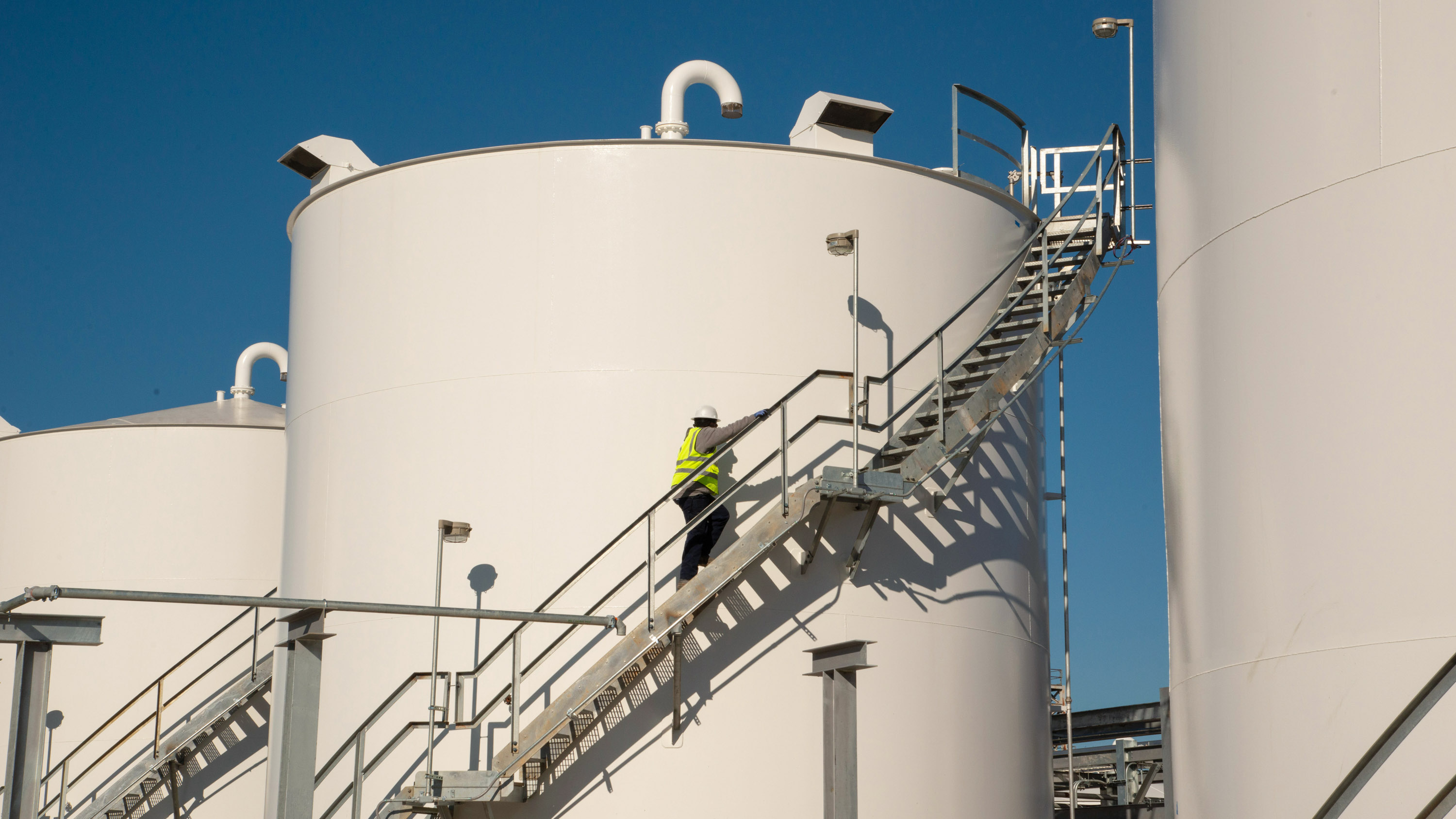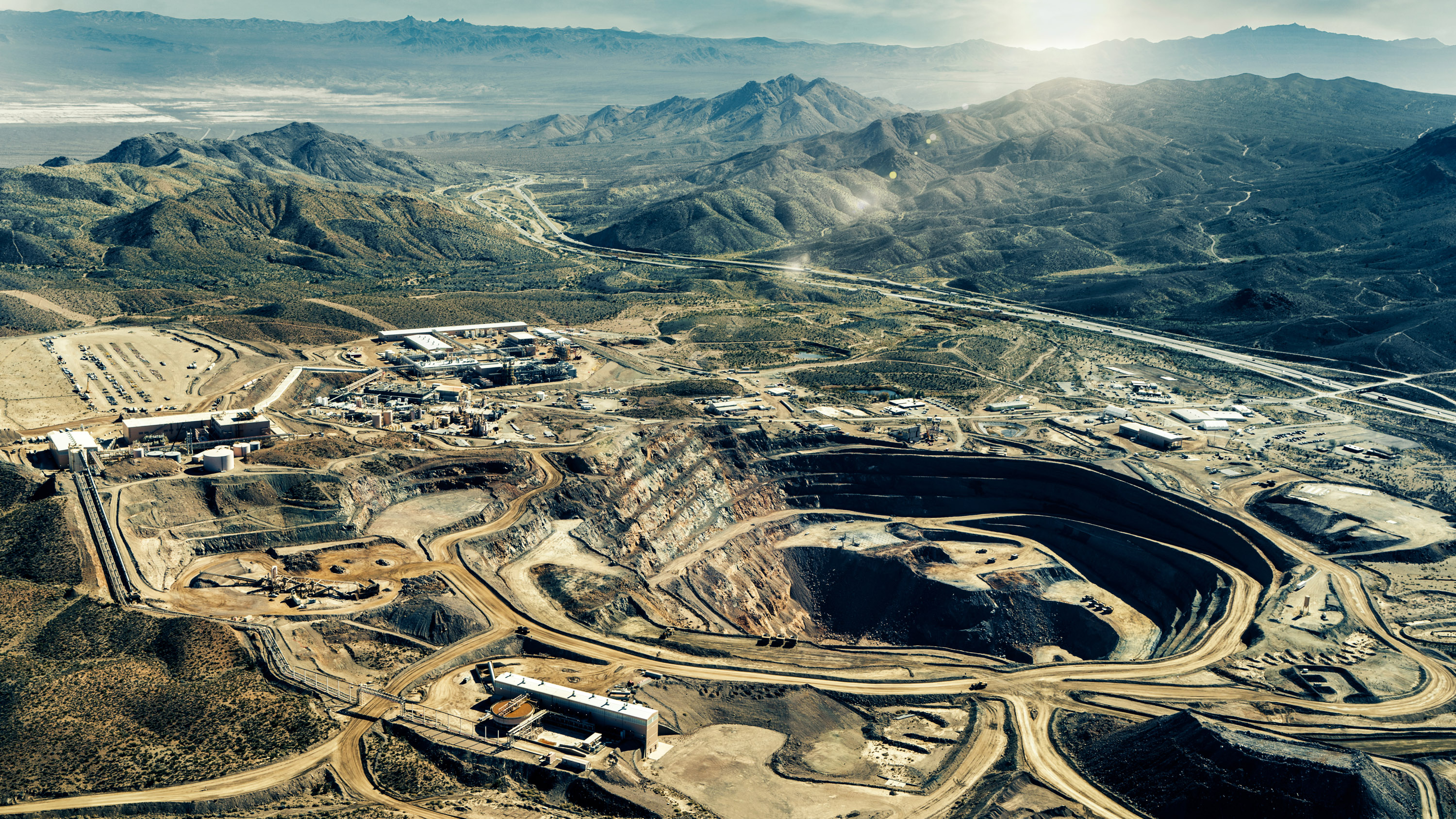2024 Climate Tech Companies to Watch: LanzaJet and its next-generation jet fuel
The company plans to use ingredients including corn, sugarcane, and municipal waste to power future flights.

LanzaJet is making next-generation aviation fuel without fossil fuels. The company recently opened the world’s first commercial-scale production facility that turns alcohol into jet fuel and plans to produce up to 9 million gallons each year.
LanzaJet wants to cut aviation’s climate impact by rethinking where jet fuel comes from.
Today, hopping on a plane means burning huge amounts of fossil fuels—the aviation industry accounts for about 3% of global greenhouse-gas emissions.
LanzaJet’s technology makes jet fuel using alcohol, which can be sourced from a variety of materials, including corn and sugarcane. The company’s process starts with ethanol and then uses a series of steps that pull out water, string molecules together into longer chains, and add hydrogen. The result is a chemical mixture, which the company then processes further to separate out the components that can be burned as jet fuel.
The company is a leader in this alcohol-to-jet-fuel pathway. Currently, nearly all commercially available alternative jet fuels use waste fats, oils, and greases as their starting material, but as the industry scales, there’s a growing concern about their limited supply.
This new option for alternative fuels could drastically expand supply and help the industry scale more quickly, which will be crucial to meeting climate targets. LanzaJet opened the first commercial alcohol-to-jet-fuel factory in Georgia in January 2024 and has buyers secured for all the fuel produced at that facility through 2034. British Airways, one of LanzaJet’s investors, will be a customer.
Key indicators
- Industry: Aviation fuels
- Founded: 2020
- Headquarters: Deerfield, Illinois, USA
- Notable fact: LanzaJet spun out of LanzaTech, a company whose main technology uses microbes to convert waste materials into chemicals and fuels.
Potential for impact
Alternative fuels still produce carbon dioxide and other greenhouse gases when they’re burned in a plane’s engine. The difference is that they typically remove some carbon from the atmosphere first. In this case the corn or sugarcane used to make the ethanol soaks up carbon dioxide as it grows. The result is that at least some of the emissions from flying can be considered offset by the process of making the fuel.
LanzaJet’s fuels could cut the climate impacts from burning fuel roughly in half, though the exact amount will depend on the source of alcohol used. The company’s sugarcane-derived ethanol could cut emissions by between 54% and 66%, according to the US Environmental Protection Agency, which certifies low-emissions fuels under the country’s Renewable Fuel Standard program.
The company plans to test out its new Georgia factory using corn-based fuels, though it’s only certified to sell sugarcane-based fuels in the US so far. LanzaJet is also partnering with its former owner, LanzaTech, to take materials like municipal solid waste and industrial waste gas and transform them into ethanol, which LanzaJet will then make into jet fuel. This pathway could result in jet fuel that’s 85% less polluting than fossil fuels, the company claims.
Caveats
Scaling could present a major challenge for LanzaJet, as it does for the industry as a whole. Alternative jet fuels made up just 0.17% of all global aviation fuel used in 2023. LanzaJet’s goal is to produce a billion gallons of alternative jet fuels annually by 2030, significantly more than the roughly 160 million gallons produced by the entire alternative fuels industry last year. To achieve that, the company will need to build many large facilities, and do it quickly.
Cost is another major challenge for new fuels—on average, alternative jet fuels cost 2.8 times more than their fossil-fuel counterparts in 2023. Prices could come down as facilities scale, but fuel is a significant cost for airlines, making this a crucial consideration for future customers.
Experts also caution that fuels from biological sources still have environmental impacts. Those effects depend largely on the specific agricultural practices used to produce them. Clearing natural ecosystems to plant massive fields of single crops, for example, can on balance release more greenhouse gases into the atmosphere than those crops will ever capture. In the worst-case scenarios, some crop-based biofuels produce more emissions than fossil fuels. LanzaJet and other fuel makers will need to choose their source materials carefully and be transparent with regulators and the public about the effects of producing their products.
Next steps
LanzaJet is working to validate and ramp up its first commercial facility, which the company hopes to have operating at full capacity by the end of 2024. Next, the company will begin building even larger facilities, including a 27-million-gallon-per-year facility in the UK in partnership with British Airways that should be operating by 2027.
Explore the 2024 list of 15 Climate Tech Companies to Watch.
Deep Dive
Climate change and energy

This rare earth metal shows us the future of our planet’s resources
The story of neodymium reveals many of the challenges we’ll likely face across the supply chain in the coming century and beyond.

Andrew Ng’s new model lets you play around with solar geoengineering to see what would happen
The climate emulator invites you to explore the controversial climate intervention. I gave it a whirl.

Want to understand the future of technology? Take a look at this one obscure metal.
Here’s what neodymium can tell us about the next century of material demand.
Stay connected
Get the latest updates from
MIT Technology Review
Discover special offers, top stories, upcoming events, and more.
